Anycubic with its Kobra series has managed to have a model for each type of user with machines with a great quality/price ratio that surely will not disappoint us given the experience of Anycubic in 3D printing in both FDM and SLA machines.
Today we are going to present two models, the Kobra Neo and Kobra Go, which although they have an identical base differ in two important aspects… their extrusion system and its assembly, something that is reflected in the final price of both machines.

In case you do not know Anycubic we anticipate you are well-known in the 3D world has a wide range of models both FDM and SLA that we invite you to discover on their website.
As always before continuing with the article remind you that you can join 3DWork in our Telegram channel full of deranged by 3D printing, or on our social networks Facebook, Twitter, Instagram.
Anycubic Kobra Neo y Go
As we have already mentioned, these two new printers are practically identical except for the extrusion system and its assembly.
We leave you with the presentation videos of both machines.
Below you have its technical specifications:
| Kobra Neo | Kobra Go | |
| Print volume | 220 x 220 x 250 mm (8.7 x 8.7 x 9.8 in) | 220 x 220 x 250 mm (8.7 x 8.7 x 9.8 in) |
| Printing surface type | PEI magnetic | PEI magnetic |
| Extrusion type | Direct | Bowden |
| Hotend | MK8 with PTFE | MK8 with PTFE |
| Print speed | Between 60-100mm/s | Between 60-100mm/s |
| Leveling sensor | Inductive | Inductive |
| Z-axis | Single stepper motor | Single stepper motor |
| Display/Connections | 2.4″ LCD encoder with push-button, USB-C and MicroSD | 2.4″ LCD encoder with push-button, USB-C and MicroSD |
As you can see both maintain the perfect functions that simplify and improve the operation and use of the machine:
- Print size 220 x 220 x 250 mm
- 25-point Anycubic LeviQ leveling system
- Color display with a simple interface
- Using magnetic PEI as a printing surface
But what are the differences between Kobra Neo and Go?
As we have already mentioned basically there are two big differences between both machines, well 3 if we count the price.
- Extrusion system, while in the Anycubic Kobra Neo we have a direct extrusion system that will allow us greater control of the filament flow the Anycubic Kobra Go mounts a traditional bowden extrusion system
- Assembly, here another important aspect is the assembly of the machine… while the Kobra Neo comes pre-assembled having the machine ready in a few minutes and without much effort, the Kobra Go requires more work in this aspect and can be more laborious assembly and adjustment.
In any case, we have some great instructions both physically on paper and in electronic format.
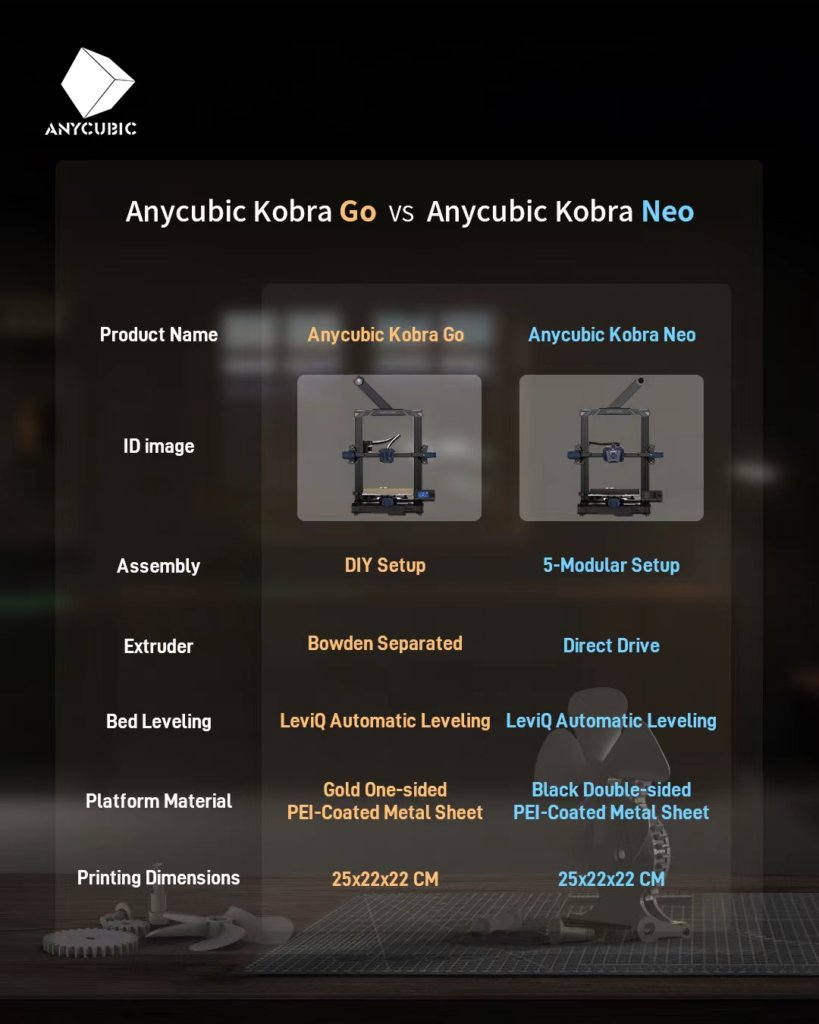
Where to buy the Anycubic Kobra Neo and Go?
Anycubic is a reference brand in 3D printing and we can find its products in the most important online stores in addition to its own store:
If you use the purchase links, the price of the product will be the same as if you access it regularly, but 3DWork will have a small commission.
Something that will help us support the project and continue generating content.
Content of Kobra Neo and Go kits
Anycubic as always has done a great job with well-protected kit packaging in addition to including everything necessary for commissioning and assembly.
The Kobra Neo comes practically pre-assembled from the factory and the commissioning process is very simple between 15 to 30 minutes will take you to assemble and start printing the example test.
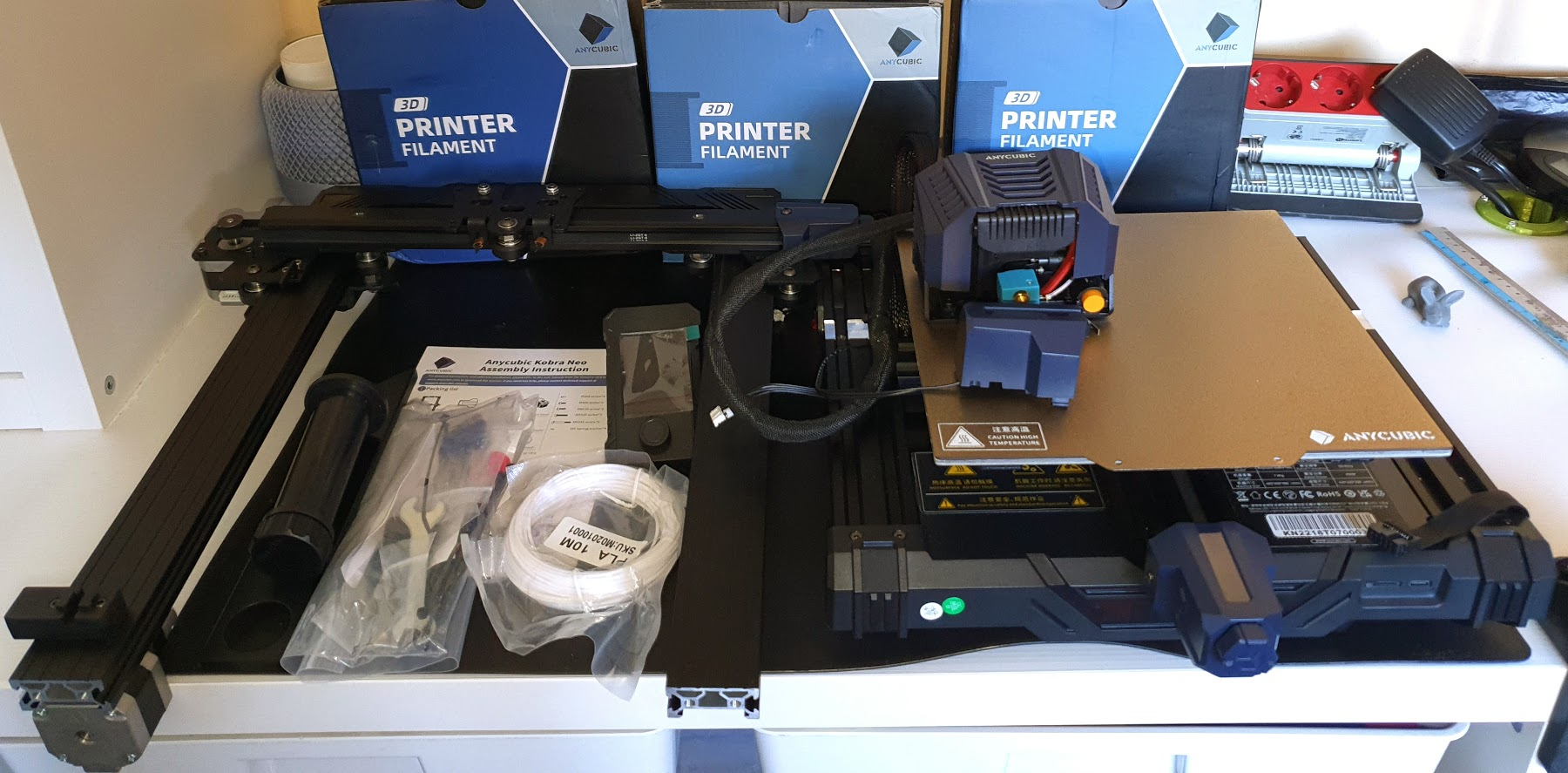
On the other hand, the Kobra Go as commented has only assembled the base and platform of the printer and we must mount the XZ axes, the kinematics, and the extrusion system. In this case and depending on your expertise we can have the machine ready in about 45m to 1h15m.
We advise you to carefully follow the assembly manual included both in physical format and in addition to paying special attention to the alignment/square of the different profiles or movement wheels.

The contents of both kits include in addition to the printer parts:
- 2.4″ color LCD display
- PEI magnetic printing platform
- filament support and a sample for testing
- Tool kit and screws needed
- Cables
- SD card and USB adapter including manuals, laminator profiles and test parts

Components and mechanics
Both models have a chassis made of aluminum profiles although they are not the typical v-slot which can limit us in the future if we want to make modifications to the printer.
As usual in the Anycubic Kobra series, all the electronics and wiring are located at the base of the printer which allows it to be protected as well as perfectly ventilated.
Kinematics
The Kobra Neo and Geo use Cartesian kinematics where it is the bed that moves on the Y axis. In this aspect, including a magnetic PEI surface that lightens the whole gives us more play when it comes to obtaining better performance in the machine.
Continuing with the bed is anchored to the axle by 4 eccentric wheels that make it firm.
We also have tensioners on the X and Y axes that are always appreciated for the maintenance and adjustment of our printer.
Electronics
As usual in their machines, Anycubic mounts a board manufactured/designed by them, on which unfortunately we do not have much information being this something that can limit us if we think about making mods to the machine.
In any case, we can confirm that it uses an MCU 32b like the rest of the Kobra series mounting silent drivers that are always appreciated and that allow the machine to run in the same work area by generating an acceptable 45dB in normal operation.

We have to say that it comes refrigerated with a large fan that will prevent us from overheating.
As usual, we have a USB port to connect our electronics to other devices and an SD port to transfer/print our parts.
Hotend, extruder and bed
As we mentioned before, one of the differences between the Kobra Neo and the Kobra Go is its extrusion system.
As we mentioned before, one of the differences between the Kobra Neo and the Kobra Go is its extrusion system.
Our personal opinion is that the use of direct extrusion, despite adding more weight on the shaft and limiting the speed a little, maintains finer control of the filament extrusion flow. The block/nozzle section is a traditional MK8.

On the other hand, we have the Kobra Go with Bowden extrusion system that mounts an MK8 hotend too, the set is very compact also including layer and hotend fan in addition to the leveling sensor.

In both cases, the whole looks compact, stylish, and quite quiet… Although an improvable part would be the layer ventilation nozzle and its fan can fall short and limit us in certain aspects.
A negative aspect is that the extruder does not have an adjustable filament tensioner which can complicate working with flexible filaments.

Anyway, we have to understand the price of the machine so we can not ask for much more quality.
Hopefully, soon we will have mods from the community that allow us to improve this part that is usually greatly forgotten by the manufacturers.

With respect to the hotbed, it behaves properly although it is not especially fast in reaching working temperatures. On the other hand, it seems that it is limited to 110º so if we plan to work with some technical materials we may have some limitations.
Display and printer management interface
Both models have the same 2.4″ color screen controllable by a mechanical push-button control with a simple interface, perhaps too much for our taste.

And it is here in this component where we see that this printer has some limitations or points of improvement that although they are not critical and surely Anycubic corrects in future versions of firmware we miss some adjustment functions both of the printer and during printing. It is a pity that more importance is not paid to this aspect that although it is not critical can limit according to which users.
Print quality
As always for tests, we use default settings which is what normally 90% of people do when using a new printer, if you are starting in 3D printing, the first thing we did was launch the example object that carries the SD.
All the tests were carried out with the profiles that come with the printer, only the temperature of the filament was adjusted to verify what results we can obtain with the default configurations.
Obviously, we advise, although the results are correct, to perform calibration tests to correctly adjust these values to our taste/printing conditions.
Using the excellent filament of Anycubic PLA Silk silver that also serves to highlight any artifact we dedicated ourselves to printing different prints of our own tests on both printers, and of course, they were not simple pieces since we wanted to see the potential of these machines.

To our Kobra Neo we throw some pieces in glass mode, some with internal geometry and overhangs/bridges and others with quite a few curvatures.

To our Kobra Go apart from performing some tests in glass mode we immediately embarked on an impression of about 2 days with the octopus bottle rack so famous lately.
In both cases, the printers behaved impeccably although as we already mentioned the layer ventilation was a little fair for our taste. The direct extrusion system of the Kobra Neo took muscle with a very good extrusion control that was noticeable in the overall final quality, especially in filament retractions.
We still have to do some tests with TPU, PETG, or ASA / ABS to see how our Kobra Neo and Go behave.


























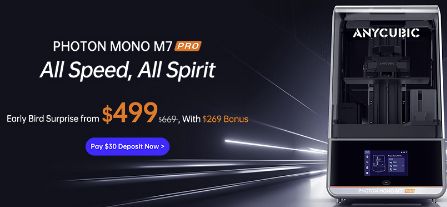

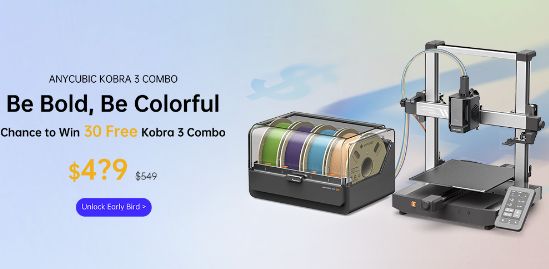






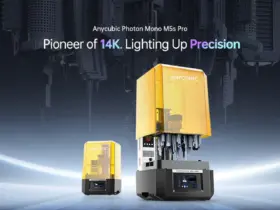
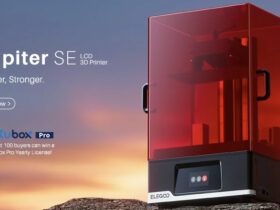
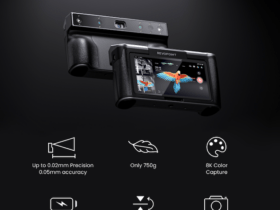
Hi guys,
I hope you can help me out as you are the only source of information talking about the mainboard and Anycubic doesn’t answer my question..
Can you confirm that both the Neo and the Go use the same type of mainboard (TriGorilla v_3.0.6)?
I own a Neo and need to replace the mainboard, Anycubic only offers the one for the Go though. Having a closer look at it and also at the video about how to replace the mainboard from them, it seems that it’s the exact same model like the one mounted in the Neo.
It would be great if you guys could help me out here!
Keep up the good work, your site is great!
Thanks!
Hi Un.
Yes both machines have the same mainboard. In fact except a few differences explained the rest are exactly the same, in this case and about the mainboard is the firmware settings due the changes on hotend.
Thank you SO much!
That means I can safely order the mainboard of the Go as it comes empty anyway and needs to be flashed with the respective Neo firmware available at GitHub (don’t have a clue _how_ to do that yet though LOL).
Thanks again and have a great day!